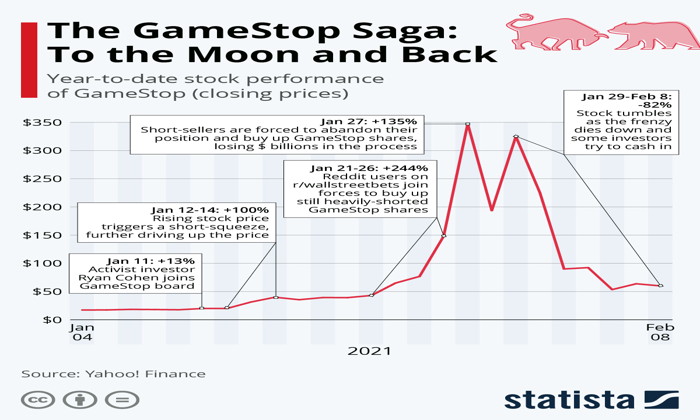The recent Bitcoin crash has sent shockwaves through the cryptocurrency market, causing a dramatic price drop that has left investors reeling. With Bitcoin falling below $88,000 and hitting a three-month low, other major cryptocurrencies like DOGE, ETH, SOL, and XRP have also plunged by double digits. This downturn has not only affected individual investors but has also contributed to a significant decrease in the overall market capitalization, which dropped nearly 10% in just 24 hours. The volatility in crypto markets is increasingly concerning, as the Crypto Fear & Greed Index reflects a growing sense of dread among traders. As the dust settles from this Bitcoin crash, many are left questioning the stability of their investments in this unpredictable landscape.
In recent times, the cryptocurrency sector has faced a tumultuous episode marked by a significant downturn in Bitcoin’s value, drawing the attention of both seasoned traders and new investors alike. The sharp declines in the prices of prominent digital currencies, including Dogecoin, Ethereum, Solana, and XRP, have raised alarms about the potential for broader market instability. With Bitcoin’s market performance influencing the overall sentiment, the recent shifts have led to discussions about the implications of crypto volatility and the fluctuating market capitalization of the entire sector. As these events unfold, stakeholders are left to navigate the challenges posed by the recent downturn while considering the long-term viability of their digital asset portfolios. The situation serves as a stark reminder of the unpredictable nature of cryptocurrency trading and the importance of prudent investment strategies.
Impact of Bitcoin Crash on Major Altcoins
The recent Bitcoin crash has sent shockwaves through the cryptocurrency market, causing significant price drops across major altcoins. Dogecoin (DOGE), Ethereum (ETH), Solana (SOL), and XRP have all suffered double-digit losses, demonstrating the interconnected nature of the crypto ecosystem. As Bitcoin dipped below $88,000, it triggered a domino effect, leading to declines that have erased weeks of gains for these altcoins. Investors are now closely monitoring how these cryptocurrencies will respond in the face of heightened volatility.
The dramatic fall in Bitcoin’s price has raised concerns about the overall market capitalization of the cryptocurrency sector. With a nearly 10% drop in total market cap, the sentiment among investors has shifted to fear as indicated by the Crypto Fear & Greed Index. This decline in market capitalization not only affects individual cryptocurrencies like DOGE and ETH but also raises questions about the sustainability of the broader market as investors reassess their strategies in light of increasing crypto volatility.
Understanding the Causes Behind the Bitcoin Price Drop
Several factors have contributed to the recent Bitcoin price drop, leading to the significant plunge in the cryptocurrency market. Analysts highlight the uncertainty surrounding a potential U.S. national Bitcoin reserve as a key driver of investor anxiety. This uncertainty has been compounded by state-level proposals that have failed to establish BTC reserves, creating a lack of confidence among traders. As Bitcoin struggled to maintain its value, altcoins like SOL and XRP experienced sharp declines, further exacerbating the situation.
Additionally, broader macroeconomic conditions have played a significant role in this downturn. The recent weakness in U.S. equities, particularly in technology stocks, has created a ripple effect across the cryptocurrency market. The Nasdaq Composite’s decline over 1% has heightened fears about trade tensions and economic stability, prompting investors to pull back. As a result, the crypto market is experiencing a high level of volatility, with sharp price swings becoming more common for cryptocurrencies like ETH, DOGE, and SOL.
Market Reactions to Bitcoin’s Decline
In the wake of Bitcoin’s decline, the cryptocurrency market has reacted with a notable surge in selling pressure. Investors are increasingly wary, leading to a wave of panic selling that has resulted in significant losses for altcoins. The double-digit losses reported for DOGE, ETH, SOL, and XRP reflect the overwhelming sentiment of fear and uncertainty that has gripped the market. As traders adjust their positions, the volatility of cryptocurrencies continues to escalate, raising concerns about future price movements.
The market’s reaction to Bitcoin’s price drop also highlights the importance of market capitalization in the cryptocurrency sector. As the total valuation of cryptocurrencies falls, it becomes increasingly difficult for individual coins to stabilize. The declining market cap serves as a barometer for investor confidence, and with the Crypto Fear & Greed Index reaching a low of 25, it indicates a strong bearish sentiment. This environment could lead to further price corrections if uncertainty persists.
Future Outlook for Bitcoin and Altcoins
Looking ahead, the future outlook for Bitcoin and altcoins remains uncertain amid the current market turbulence. Analysts suggest that if Bitcoin can regain stability and close above key support levels, it may provide a much-needed boost to the broader cryptocurrency market. However, if the downward trend continues, it could lead to further declines for major cryptocurrencies like DOGE, ETH, and SOL. Investors are advised to remain vigilant and consider the potential for additional volatility in the weeks to come.
Moreover, the ongoing developments surrounding regulatory frameworks and economic conditions will play a crucial role in shaping the future of the cryptocurrency market. As traders monitor news related to Bitcoin reserves and macroeconomic indicators, the response from major cryptocurrencies will be critical. The ability of altcoins to recover from recent losses will depend heavily on Bitcoin’s performance and overall market sentiment.
Analyzing Cryptocurrency Volatility Trends
Cryptocurrency volatility has become a defining characteristic of the market, especially highlighted by the recent Bitcoin crash. The sharp price swings experienced by major cryptocurrencies like SOL and XRP illustrate the inherent risks associated with investing in this space. As Bitcoin fell to a three-month low, altcoins followed suit, reinforcing the notion that the cryptocurrency market is highly susceptible to fluctuations. Understanding these volatility trends is essential for investors looking to navigate the unpredictable landscape of cryptocurrencies.
Furthermore, the volatility in the crypto market can be attributed to various factors, including market sentiment, trading volumes, and regulatory developments. As the Crypto Fear & Greed Index indicates growing fear among investors, it is clear that market sentiment plays a significant role in driving price movements. Investors must stay informed about these trends and adapt their strategies accordingly to mitigate risks associated with crypto volatility.
The Role of Market Capitalization in Crypto Investments
Market capitalization serves as a critical metric in evaluating the health of the cryptocurrency market. As Bitcoin’s price declined, the overall market cap of cryptocurrencies dropped significantly, leading to increased scrutiny from investors. The decline in market cap affects not only Bitcoin but also major altcoins like ETH and DOGE, as a lower market cap can signal reduced investor confidence. Understanding market capitalization is essential for making informed investment decisions in the volatile crypto landscape.
In addition, the relationship between market capitalization and price movements is particularly evident during periods of market stress. A significant drop in market cap can lead to a domino effect, causing panic selling and further price declines. The recent losses experienced by SOL and XRP exemplify how interconnected these cryptocurrencies are within the broader market. Investors need to monitor market cap trends closely to gauge potential entry and exit points.
Investor Sentiment Post-Bitcoin Crash
Investor sentiment has taken a hit following the Bitcoin crash, with many traders expressing concern over the future stability of the cryptocurrency market. The drastic losses in altcoins like DOGE and ETH have led to a more cautious approach among investors. As the market grapples with uncertainty, sentiment analysis becomes crucial in understanding the potential for recovery or further decline. The Crypto Fear & Greed Index’s plunge reflects a significant shift in how investors perceive risk in the current environment.
As sentiment shifts towards fear, investors are likely to reassess their positions and strategies. Some may choose to liquidate their holdings to avoid further losses, while others may look for buying opportunities if they believe the market will eventually recover. The psychology of investors plays a significant role in shaping market dynamics, and understanding these sentiment trends can provide valuable insights for navigating the volatile cryptocurrency landscape.
Navigating the Current Crypto Landscape After the Price Drops
Navigating the current cryptocurrency landscape requires a strategic approach, especially after the recent price drops triggered by Bitcoin’s decline. Investors must remain vigilant and conduct thorough research to identify potential opportunities amidst the turmoil. The interconnectedness of cryptocurrencies means that movements in Bitcoin’s price will continue to influence altcoins like SOL and XRP. As such, a holistic understanding of the market dynamics is essential for making informed investment decisions.
Additionally, diversifying one’s portfolio can help mitigate risks associated with crypto volatility. By holding a mix of established cryptocurrencies like ETH and emerging altcoins, investors can better position themselves to weather downturns. The key is to maintain a long-term perspective, recognizing that while short-term fluctuations may be distressing, the cryptocurrency market has historically exhibited resilience. Staying informed and adaptable is crucial in navigating the current crypto landscape.
The Importance of Staying Informed in a Volatile Market
In a volatile market like the cryptocurrency space, staying informed is crucial for investors. The rapid changes in price and sentiment can have a significant impact on investment strategies. Regularly following market news, analysis, and updates about Bitcoin and major altcoins can equip investors with the knowledge needed to make timely decisions. Understanding market trends and the factors driving price changes can help mitigate risks and identify potential opportunities.
Moreover, engaging with reputable sources and participating in community discussions can enhance one’s understanding of the crypto market. As Bitcoin’s recent crash illustrates, sudden price movements can occur due to a variety of factors, including regulatory news and macroeconomic conditions. By remaining informed and connected with other investors, individuals can better navigate the complexities of the cryptocurrency market and make more strategic investment choices.
Frequently Asked Questions
What caused the recent Bitcoin crash below $88,000?
The recent Bitcoin crash below $88,000 was attributed to various factors including uncertainty surrounding a U.S. national Bitcoin reserve, unsuccessful proposals to establish BTC reserves at the state level, and broader macroeconomic concerns such as weakening U.S. equities and fears about trade tensions.
How does the Bitcoin crash impact other cryptocurrencies like DOGE, ETH, SOL, and XRP?
The Bitcoin crash has negatively impacted other cryptocurrencies, causing significant price drops. For instance, Dogecoin (DOGE) fell by approximately 13%, Ethereum (ETH) decreased by about 11.3%, Solana (SOL) dropped 13.7%, and XRP saw a decline of 15.6%, as the entire cryptocurrency market experienced a downturn.
What are the implications of Bitcoin’s price drop on the cryptocurrency market capitalization?
Bitcoin’s price drop has contributed to a nearly 10% decrease in the total market capitalization of all cryptocurrencies, which now stands at around $2.98 trillion. This decline in market cap reflects the broader sell-off triggered by Bitcoin’s crash.
Why is the cryptocurrency market experiencing high volatility during the Bitcoin crash?
The cryptocurrency market is experiencing high volatility during the Bitcoin crash due to investor uncertainty, negative sentiment reflected in the Crypto Fear & Greed Index, and the correlation of altcoins with Bitcoin’s performance. This volatility is exacerbated by macroeconomic factors affecting investor confidence.
What should investors consider during the Bitcoin crash and related price drops?
Investors should consider the market conditions, including the impact of Bitcoin’s crash on altcoins like DOGE, ETH, SOL, and XRP. It’s crucial to assess the factors driving the volatility and to remain cautious, particularly given the negative sentiment and the potential for further price drops.
How does the current Bitcoin crash compare to previous downturns in the cryptocurrency market?
The current Bitcoin crash, which saw prices fall to a three-month low, mirrors previous downturns characterized by rapid price declines and increased market volatility. Historical patterns often show that such crashes can lead to temporary declines in market confidence before potential recoveries.
What is the Crypto Fear & Greed Index and how does it relate to the Bitcoin crash?
The Crypto Fear & Greed Index is a measure of investor sentiment in the cryptocurrency market, ranging from extreme fear to extreme greed. During the recent Bitcoin crash, the index dropped to 25, indicating extreme fear among investors, which often accompanies significant price drops.
Can we expect a recovery in Bitcoin and the broader cryptocurrency market after this crash?
While recoveries after Bitcoin crashes are common, predicting the timing and extent of a recovery is difficult. Market conditions, investor sentiment, and external economic factors will play crucial roles in determining whether Bitcoin and other cryptocurrencies can rebound from this downturn.
| Cryptocurrency | 24-Hour Price Change (%) | Current Price (USD) | Monthly Change (%) |
|---|---|---|---|
| Bitcoin (BTC) | -8% | $87,657 | N/A |
| Dogecoin (DOGE) | -13% | $0.1192 | -43% |
| Ethereum (ETH) | -11.3% | $2,374 | N/A |
| Solana (SOL) | -13.7% | $135.46 | -46.6% |
| XRP | -15.6% | $2.08 | N/A |
Summary
The Bitcoin Crash has significantly impacted the cryptocurrency market, leading to substantial losses for major altcoins like Dogecoin, Ethereum, Solana, and XRP. As Bitcoin dipped below $88,000, market sentiment turned negative, reflecting investor concerns over ongoing volatility and macroeconomic uncertainties. With the total market cap dropping nearly 10%, it’s evident that the effects of the Bitcoin Crash are far-reaching, prompting a reevaluation of investment strategies in this turbulent environment.
The recent Bitcoin crash has sent shockwaves through the cryptocurrency market, as the leading digital asset plummets below $88,000 for the first time in three months. This significant price drop has not only affected Bitcoin but has also led to a widespread decline in other major cryptocurrencies, including DOGE, ETH, SOL, and XRP, all of which recorded double-digit losses. Currently trading at $87,657, Bitcoin’s 8% drop today has erased the gains it had accumulated over the past week, leaving investors anxious about the future. With the total market capitalization for cryptocurrencies dwindling by nearly 10% in just 24 hours, the negative sentiment is palpable among traders. Concerns over macroeconomic factors and regulatory uncertainties are fueling the ongoing crypto volatility, prompting many to reevaluate their positions in this turbulent market.
In the wake of the recent downturn in the digital currency sphere, the dramatic decline of Bitcoin has raised alarms across the board. As the flagship cryptocurrency faltered, it dragged along a host of altcoins like Dogecoin, Ethereum, Solana, and XRP, all experiencing notable declines in value. This sudden plunge highlights the interconnected nature of the cryptocurrency ecosystem, where one asset’s performance can heavily influence the others. The sharp contraction in market capitalization reflects growing anxiety among investors, who are grappling with unpredictable market conditions and the looming shadow of regulatory scrutiny. As the crypto landscape continues to evolve, understanding these dynamics becomes essential for navigating the complexities of investing in digital currencies.















